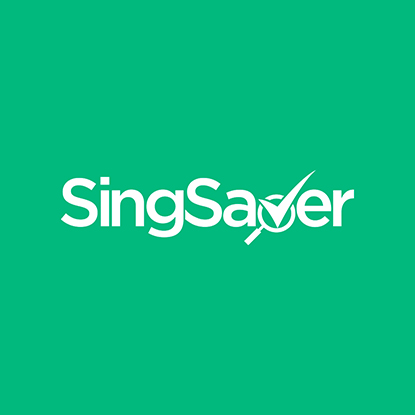Rules for new housing loans you should know when purchasing property in 2022 and beyond.
On 29 September 2022, the Singapore Government announced a raft of cooling measures to address the rising interest rates and HDB resale property prices. The changes are effective on 30 September.
With the prices of public and private homes skyrocketing, the government introduced several measures including:
- Wait-out period - A 15-month wait for private property owners to purchase non-subsidised HDB resale units. This does not affect those 55 and above moving to 4-room or smaller flats.
- Higher interest floor - A 0.5% increase in the medium-term interest rate floor used in computing the Total Debt Servicing Ratio (TDSR) and Mortgage Servicing Ratio (MSR)
- Tighter LTV ratio - Lowering the Loan-to-Value (LTV) limit for HDB loans from 85% to 80%
These cooling measures may prompt potential homebuyers to explore alternative financing options, such as personal loans, and carefully evaluate their borrowing capacity amidst changing loan-to-value ratios and interest rate floors.
In this article, we look at the key measures introduced by the government and the impact they have on those seeking home loans. We’ll give you insight into how much you can borrow for your home loan.
New housing rules in Singapore
Buying your first property is an exciting and positive endeavour, and the government wants to make sure it remains so.
While the rules introduced in December were to ensure that borrowers don’t over-borrow when purchasing properties, the September changes were aimed at moderating demand for the HDB resale market.
In a nutshell, here are the main objectives of the new housing rules:
- Keep the property market from over-inflation
- Ensure borrowers don’t circumvent the LTV and TDSR limits
- The housing rules will strengthen the credit standards in financial institutions
- Guarantee the long-term financial health of households
Let us review each of the measures introduced and how they impact your borrowing.
A 15-month wait for private property owners to purchase HDB resale
The rising property prices have not slowed demand for resale HDB units, with a July HDB flash estimate showing a 2.6% quarter-on-quarter increase in resale flat prices in Q2 2022.
To address this increasing spike, a temporary measure of a 15-month waiting period was introduced. This applies to former and current private property owners 55 years and below looking to buy a non-subsidised HDB resale flat. Previously, the duration was six months.
The current 30 months waiting period for private property owners who wish to apply for the CPF Housing Grant to purchase a HDB resale unit remains unchanged.
Higher interest floor for property loans
TDSR is the portion of a borrower’s gross monthly income that goes into settling debt obligations, including the expected loan.
For property loans granted by private financial institutions, a 0.5% increase for the medium-term interest rate floor was implemented by the MAS. This percentage point is used to compute the Total Debt Servicing Ratio (TDSR) and Mortgage Servicing Ratio (MSR).
The revised rates apply to loans to purchase a property where Option to Purchase (OTP) has been granted on or after 30 September 2022. The revised rates also apply to mortgage withdrawal loan applications made on or after 30 September.
TDSR is crucial as it ensures financial prudence among borrowers and makes sure there is long-term sustainability in the property market. To calculate your TDSR threshold, you need to consider the monthly debt obligations you currently hold.
For instance, if you have a loan with monthly instalments that take up 10% of your income, then you can only access further loans with repayments that are equivalent to 45% of your monthly income. In rare cases, financial institutions can lend to a borrower whose TDSR is above 55% after a thorough credit evaluation. Financial institutions have an obligation to thoroughly report, document, and report such loans. The institutions are required to:
- Document the reasons why they are offering loans above the threshold.
- Ensure that the exceptional cases are subject to enhanced credit evaluation.
- Come up with a plan with borrowers for how they will reduce their debts.
- File a report with the Monetary Authority of Singapore (MAS) on exceptional cases. The report should include:
- Profile of the borrower including age and income
- Loan details include TDSR, LTV ratio, and loan tenure
- Reasons why there is an exception
Tightening of Loan-to-Value limit for HDB loans
The LTV limit is the maximum amount of loan a borrower can get as a percentage of the property’s value. You calculate LTV by dividing the loan amount by the property value.
The LTV limit for HDB housing loans was revised from 90% to 80%. The new limit applies to new flat applications or resale applications that happen on or after 30 September 2022. The medium-term interest rate floor (used to calculate the LTV limit for loans from financial institutions) has been raised by 0.5%.
For HDB loans granted to new applications, a 3 per cent interest rate floor has been introduced for computing the eligible loan amount. The concessionary loan interest rate remains at 2.6% till 31 December 2022.
How much can you borrow to purchase a property in Singapore?
The amount of money you can borrow to purchase a property depends on the LTV limit. If you are buying a HDB flat and you want to get a bank loan, then you will have a 75% LTV limit, while buying using HDB concessionary loans gives you an LTV limit of 80%.
When using a bank loan, you can pay 20% of the remaining amount using cash or your CPF Ordinary Account. The balance of 5% must be paid in cash. On the other hand, if you opt for the HDB concessionary loans, you can pay the 15% balance using either cash or your CPF account, or a combination of both.
For example, if you want to buy a HDB property costing S$600,000 there are two scenarios.
Scenario 1: Using HDB concessionary loans
According to MAS’ housing loan rules when buying using a HDB concessionary loan you will have a LTV limit of 80%. Hence you can borrow S$480,000.
The balance of 20% (S$120,000) you can pay in cash or use your CPF Ordinary Account to pay.
Scenario 2: Using a loan from a financial institution
If you borrow from a financial institution such as a bank to buy property, you will qualify for a LTV limit of 75.5%. Hence you can borrow S$450,000.
The maximum LTV limit depends on various factors. Listed below are the main factors that will determine the LTV percentage you get:
- Amount of outstanding loans – home or otherwise. You must comply with the TDSR of 55%.
- Location of the property
- The outstanding lease on the property
- Your credit score
- Loan tenure and your age
You can make use of these details to select a loan type that will best meet your financing needs.
If you opt for a home loan from a financial institution, look out for the best deals. Browse the best home loans and choose one that suits your needs.
Read these next:
The When And How Of Refinancing Your Home Loan
Fixed vs Floating Home Loan Rates: Which One Is Suitable For You?
Home Insurance Promotions And Discounts To Protect Your Home
Similar articles
What You Need To Know About The New Housing Loan Rules
TDSR and LTV Ratio: Should These Cooling Measures Be Reviewed?
Clearing Up the Confusion on New Property Measures in Singapore
How To Save Money For A Flat Before Your 35th Birthday
Loan-to-Value Ratio & Limits In Singapore (30 Sept. 2022 Update)
What Can A Debt Collector In Singapore Actually Do?
What You Need To Know About The New Housing Loan Rules
Everything You’ve Ever Needed to Ask About HDB Downpayments







.png?width=280&name=Housing6%20Things%20First-time%20Home%20Buyers%20Must%20Know%20to%20Avoid%20Regrets%20(2).png)

